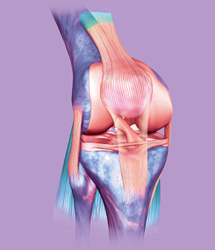Novel bone implants
Bone trauma and other defects require the surgical implantation of prosthetics that facilitate repair by supporting bone differentiation and development. The use of biodegradable materials that do not need to be surgically removed is gaining ground since they provide faster and more thorough healing and recovery of a patient. Also, the average age of patients requiring implants is decreasing and thus the load-withstanding requirements for implants are becoming tougher. The aim of the EU-funded ‘Development of load-bearing fibre reinforced composite based non-metallic biomimetic bone implant’ (Newbone) project was to develop fibre- and nanohybrid-reinforced composite (FRC and NHRC, respectively) material for surgical bone repair and replacement. The consortium involved leading small and medium-sized enterprises (SMEs) in the field of joint prosthesis with important innovations in parts and materials used in injury repair. Project partners generated implants for knee and shoulder ligament repair based on NHRC, a technology that led to pre-clinical tests of the prototypes and immediate commercialisation. These novel implants had certain advantages compared to existing ones due to their small size including less damage to healthy tissue caused by surgery, improved bone growth and attachment to the surrounding tissues. Additionally, FRC implants were developed with surfaces that combined micro-roughness with bioactive properties. Various materials were tested and hydroxyapatite proved the best surface material with the highest load-bearing capacity. Due to the non-metallic nature of these FRC implants, diagnosis by magnetic resonance imaging (MRI) and computed tomography (CT) would be allowed. The Newbone innovations are hoped to significantly impact bone replacement, lowering related health costs and improving the success of such operations. Importantly, the developed technologies are expected to increase the turnover of the European implant industry to take the role of a global leader in the sector.







